MY FAVOURITE FLOWER
A closer look at Anagallis arvensis The Scarlet Pimpernel By Paul James (uk) |
MY FAVOURITE FLOWER
A closer look at Anagallis arvensis The Scarlet Pimpernel By Paul James (uk) |
There can be few people who are not impressed by the beauty and complexity of flowers. The rose is a most popular cultivated flower in the UK and though I acknowledge that it is a beautiful flower of exquisite form, my personal favourite is a wild flower : the Scarlet Pimpernel. As wild flowers go it is not rare, though it is not found in abundance in my locality. It appears to thrive happily on 'waste places' and sandy locations, but here it seems happy to grow and reproduce on calcareous soils, overlaying limestone rock, and appears to relish my driveway which is surfaced with compact limestone gravel. Diminutive it may be, though not the smallest by any means, and is easily overlooked especially when solitary or isolated. In groups it can be a heartening site as the scarlet heads bob in the slightest breeze :-
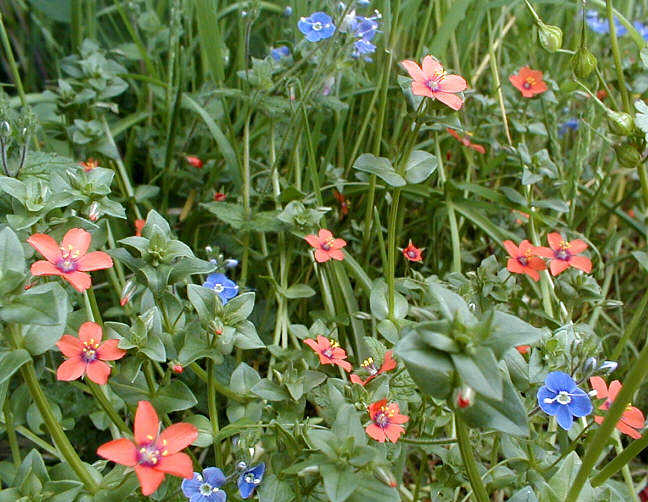 |
Here we can see a typical mixture of Scarlet Pimpernel and Common Speedwell in sparkling contrast over a blaze of lush green young grass. Note its vivid yellow stamens.
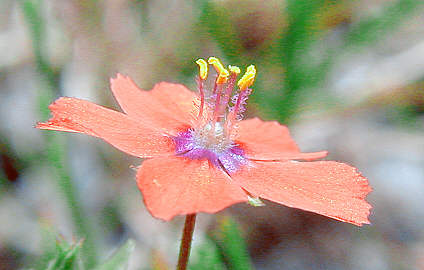 |
These close ups give an idea of the colourful flower parts. Its diameter across the petals is about 8.0 mm. The stigma can be seen just behind one of the stamens on the left, which I presume to indicate that it is self pollinating.
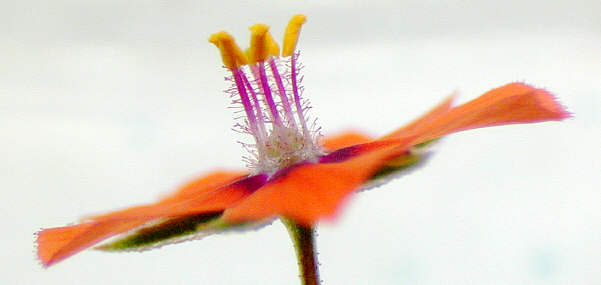 |
Looking skywards, this photo shows how flat the petals can be in bright daylight, but by mid afternoon they usually start to close up, and the red petals are obscured by the sepals later on, and remain so in damp dull spells. The ovary, a green swollen organ at the heart of the petals, can just be seen, with its attendant style and stigma above,
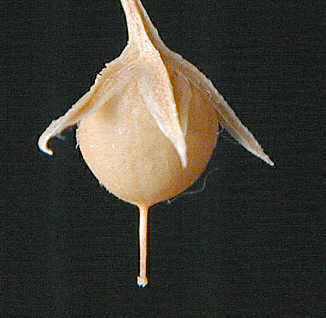 |
After pollination the ovary swells and the seeds develop within the fruit cases as the stems appear to dehydrate. The style can still be seen above hanging downwards from the fruit case, and the withering sepals too. Below is an image of the seeds still developing inside the fruit case which are nearly ripe for dispersal
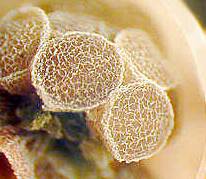 |
The individual seeds are like squat cones, and their bases are clearly seen above. Note below how the fruit case divides into two equal parts, revealing about a dozen seeds, which when mature look like miniature 'brazil nuts' as below.
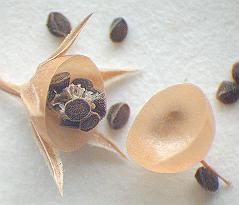 |
Below, the tip of a ball point pen contrasts with the size of one seed !
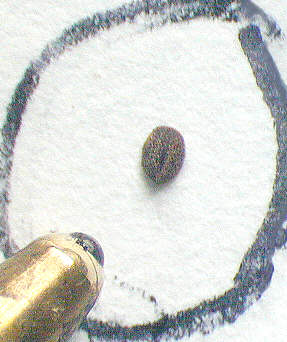 |
Finally an ant's eyeview :-
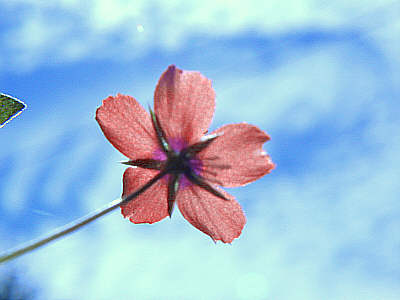 |
Photographic details
The photo's were taken with Nikon coolpix 800 and Olympus 830L digicams in conjunction with a close up supplementary lens and also using a low power stereomicroscope. Colour variation between images is accounted for by differences in the two cameras, and general lighting conditions at the time.
| All comments welcome to the author Paul James |
Microscopy
UK Front Page
Micscape
Magazine
Article
Library
Please report any Web problems or offer general comments to the Micscape Editor.
Micscape is the on-line monthly magazine of the Microscopy
UK web
site at Microscopy-UK